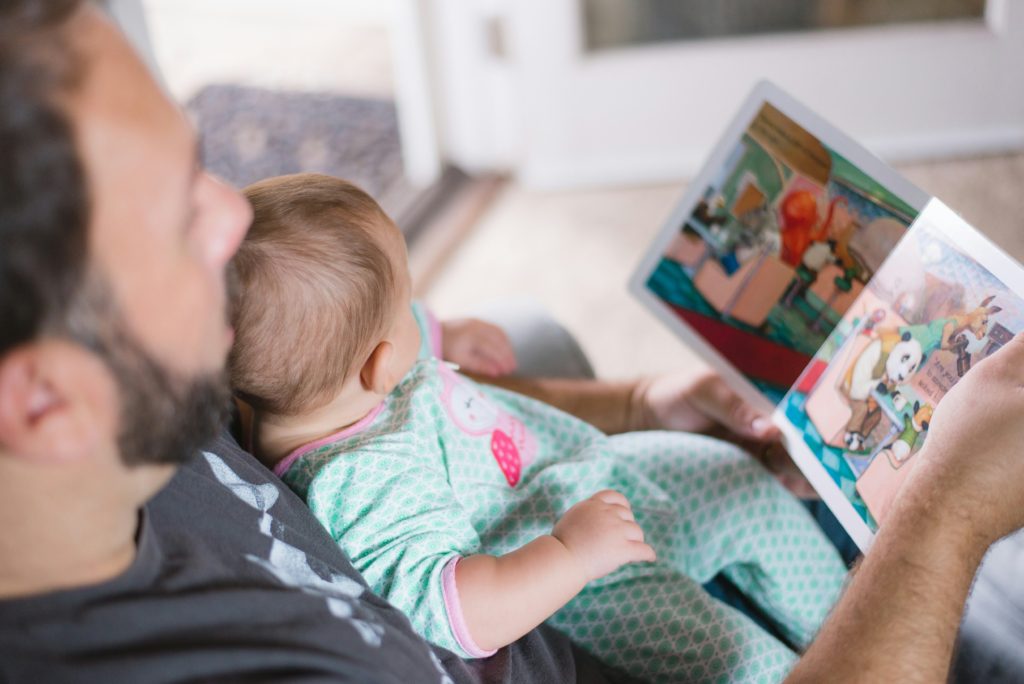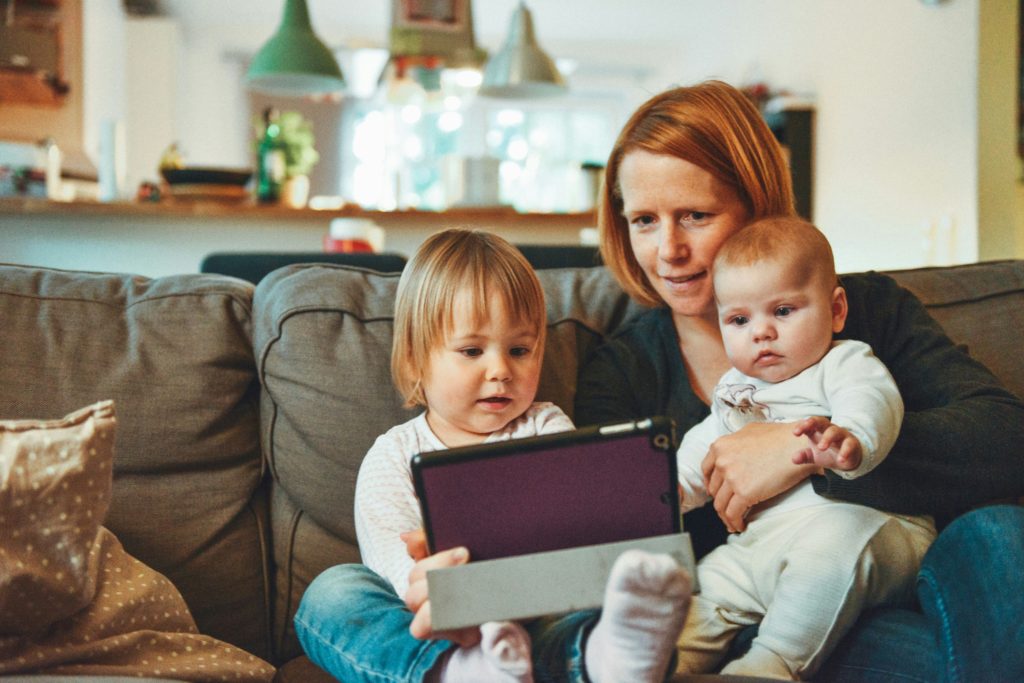Given the considerable daily exposure to screens, parents naturally harbour concerns about its potential adverse effects on their children’s learning. In this article, we shall explore how screen viewing can affect children’s language development, starting with understanding how a child first learns to acquire a language.
Language development in early childhood
According to Cusick and Georgieff (2016), a child’s first 3 years are critical for brain development and maturation, as well as the most intensive period for the development of speech and language skills. Language development is facilitated by the child’s social environment, such as the presence of a competent adult who is able to provide the child with opportunities to learn the forms and features of a language (Blankson et al., 2015; Byeon & Hong, 2015). Having an adult to guide the child in language acquisition is especially important for children under 2 years old, who typically struggle in comprehending information and require face-to-face communication with others to enhance their learning (Bhutani et al., 2023).

Effects of screen viewing on children’s language development
Screen viewing can be either beneficial or detrimental towards a child’s language development, depending on factors such as age and quality of the content being viewed.
Age
As previously highlighted, language acquisition in children under the age of 2 is more effective when engaged with an adult who encourages repetition of words and phrases or discusses the meaning of words with them (Mustonen, Torppa & Stolt, 2022). This is attributed to the concept of transfer deficit, whereby children struggle to apply information learned from screens to real-life situations, but exhibit no such difficulties when the same information is acquired through interactions with an adult (Madigan et al., 2020). Furthermore, screen viewing during this developmental stage tends to be passive, limiting opportunities for the practice of expressive lexical and language skills, especially in the absence of caretaker involvement (Mustonen, Torppa & Stolt, 2022).

Nevertheless, screen viewing can be beneficial for children over 2 years old who have a foundational understanding of language, enhancing their cognitive abilities, higher-order language and literacy skills (Blankson et al., 2015; Watt, 2010).
Quality of content
According to Muppalla et al. (2023), high quality content such as educational programmes can serve as an additional means for early language and literacy development in children above 2 years old. Such programmes also facilitate cognitive development, encouraging imaginative play and enhancing social skills. This sentiment is supported by Linebarger & Walker (2005), who found that educational or curriculum-based television programmes were associated with higher linguistic and lexical abilities.
Recommendations for parents
Ensuring that a child has abundant opportunities to foster their language abilities is crucial for their development. Although there isn’t a singular definitive method for achieving this, there are several recommendations that parents can consider.
Screen viewing management
The most straightforward approach is to restrict the amount of screen time children are allowed. Singapore follows the recommendations as set out by the World Health Organization (Lewis & Yap, 2022):
- No screen time at all for children under 2 years old.
- No more than 1 hour a day for preschoolers.
- No more than 2 hours a day for school-aged children and adolescents.
Besides enforcing strict control on screen time, you also play an important role by serving as positive role models! Children model after their parents’ behaviour, and research has found that if parents spend more than four hours daily watching television, their sons and daughters are respectively 10.5 times and 3 times more likely to adopt similar habits (Jago et al., 2010). In other words, monitoring your own screen time is just as important as managing your child’s screen time!
Co-viewing
Engaging in co-viewing of digital content with children offers valuable opportunities for language acquisition during screen time by integrating screen viewing with social interaction. Caregivers play a crucial role in actively providing cognitive stimulation through posing questions and actively interacting with the child, thereby fostering vocabulary development, vocalisations, and comprehension (Karani, Sher, & Mophosho, 2022). It is essential to emphasise active interaction as compared to non-interactive co-viewing, which does not contribute significantly to the child’s language development (Mustonen, Torppa & Stolt, 2022).

Conclusion
In the current digital era, it’s challenging to entirely detach children from digital screens. However, it is entirely feasible to regulate and integrate screen viewing in a manner that offers more benefits than detriments. Parents and caregivers play a crucial role in establishing a healthy balance in their children’s screen viewing behaviour. Striving to be positive role models for their children is essential in achieving this goal, ensuring that screen time contributes positively to their overall wellbeing.
Written by:
Wen Kai Ling
National University of Singapore (Year 3)
References
Bhutani, P., Gupta, M., Bajaj, G., Deka, R. C., Satapathy, S. S., & Ray, S. K. (2024). Is the screen time duration affecting children’s language development? – A scoping review. Clinical Epidemiology and Global Health, 25. https://doi.org/10.1016/j.cegh.2023.101457
Blankson, A. N., O’Brien, M., Leerkes, E. M., Marcovitch, S., & Calkins, S. D. (2011). Shyness and vocabulary: The roles of executive functioning and home environmental stimulation. Merrill-Palmer Quarterly, 57(2), 105–128. https://doi.org/10.1353/mpq.2011.0007
Byeon, H., & Hong, S. (2015). Relationship between television viewing and language delay in toddlers: Evidence from a korea national cross-sectional survey. PLOS ONE, 10(3), e0120663. https://doi.org/10.1371/journal.pone.0120663
Cusick, S. E., & Georgieff, M. K. (2016). The role of nutrition in brain development: The golden opportunity of the “first 1000 days.” The Journal of Pediatrics, 175, 16–21. https://doi.org/10.1016/j.jpeds.2016.05.013
Jago, R., Fox, K. R., Page, A. S., Brockman, R., & Thompson, J. L. (2010). Parent and child physical activity and sedentary time: Do active parents foster active children? BMC Public Health, 10(1). https://doi.org/10.1186/1471-2458-10-194
Karani, N. F., Sher, J., & Mophosho, M. (2022). The influence of screen time on children’s language development: A scoping review. South African Journal of Communication Disorders, 69(1), 7. https://doi.org/10.4102/sajcd.v69i1.825
Lewis R, Yap CH J (2022) Evidence Review of Screen Use in Childhood. Saw Swee Hock School of Public Health. National University of Singapore.
Linebarger, D. L., & Walker, D. (2005). Infants’ and toddlers’ television viewing and language outcomes. American Behavioral Scientist, 48(5), 624–645. https://doi.org/10.1177/0002764204271505
Madigan, S., McArthur, B. A., Anhorn, C., Eirich, R., & Christakis, D. A. (2020). associations between screen use and child language skills: A systematic review and meta-analysis. JAMA Pediatr, 174(7), 665–675. https://doi.org/10.1001/jamapediatrics.2020.0327
Muppalla, S. K. (2023). Effects of excessive screen time on child development: An updated review and strategies for management. Cureus, 15(6). https://doi.org/10.7759/cureus.40608
Mustonen, R., Torppa, R., & Stolt, S. (2022). Screen Time of Preschool-Aged Children and Their Mothers, and Children’s Language Development. Children, 9(10), 1577. https://doi.org/10.3390/children9101577
Radesky, J. S., & Christakis, D. A. (2016). Increased Screen Time: Implications for Early Childhood Development and Behavior. Pediatric Clinics of North America, 63(5), 827–839. https://doi.org/10.1016/j.pcl.2016.06.006
Watt, H. J. (2010). How does the use of modern communication technology influence language and literacy development? A review. Contemporary Issues in Communication Science and Disorders, 37(Fall), 141–148. https://doi.org/10.1044/cicsd_36_f_141

Leave A Comment